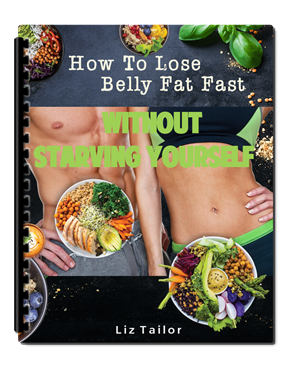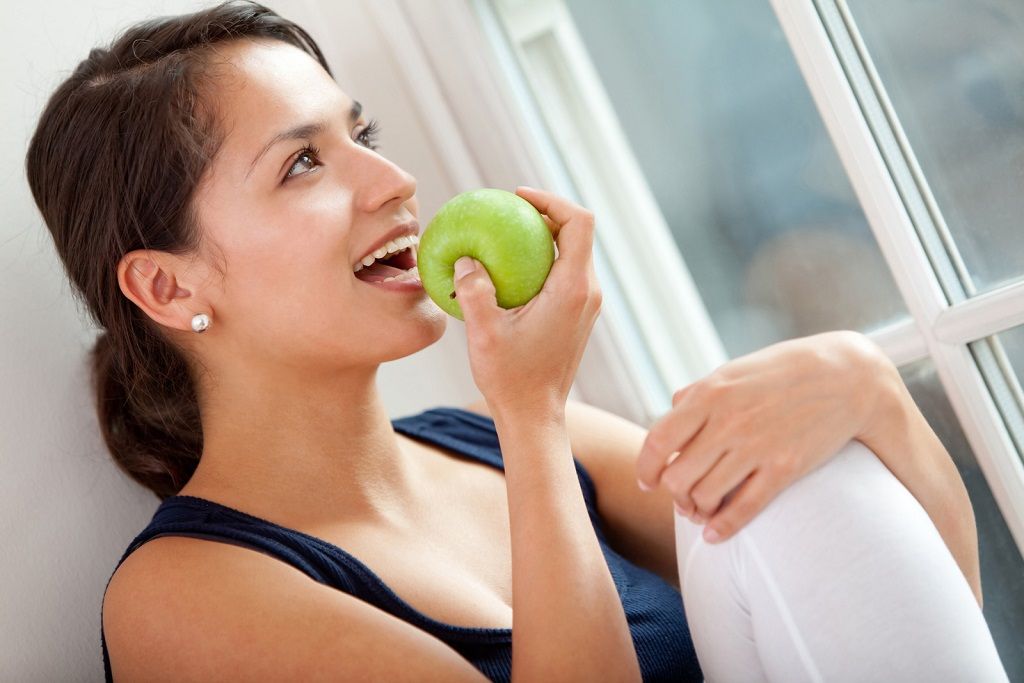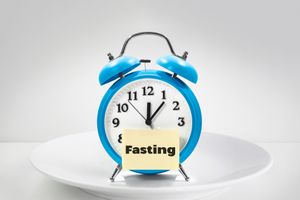Clean eating is a hot lifestyle trend that has been growing in popularity and gaining massive momentum over the last few years.
This healthy way of living focuses on consuming whole, unrefined foods rather than pre-cooked or processed alternatives.
The alternatives tend to have much of their nutritional value removed as a result of making them last longer through processing. These alternatives usually cost less, but you know how the old saying goes, “You Get What You Pay For.”
Clean eating diets are a very popular trend these days. They focus on replacing unhealthy processed foods with fresh, whole alternatives.
Processed foods have often lost much of their nutritional value in order to make them last longer or taste better.
Not only that, but they may also contain additives or preservatives that can have a negative impact on your health with regular consumption.
Who Started The Clean Eating Trend?
While the idea of eating whole foods to stay healthy was certainly not new at the time, it gained popularity in 2007 when the Eat-Clean Diet Book was published by bestselling author and fitness model Tosca Reno.
The book detailed the “eat-clean” diet that she stuck to in order to get in shape for a bodybuilding competition.
The popularity of the book led to ten more titles in the Eat-Clean series being published.
Clean eating is nothing more than healthy eating using common sense.
Does your diet consist mostly of fast food or instant meals? Have you been wanting to get healthy and fit, but have been putting it off?
If so, you’re in the right place, because you’ll discover some of the Benefits Of A Clean Eating Lifestyle as well as a few tips to help you get started on your journey.
Ready, set, go…
A Healthier Heart
Many whole foods can have a positive impact on your heart health. Nuts are high in heart-healthy nutrients such as vitamin E, omega-3 fatty acids, and fiber.
Almonds are particularly high in monounsaturated fats, which help lower the levels of bad cholesterol in your blood.
Whole grains such as brown rice, oats, or whole wheat bread are also great sources of fiber, which helps your body process cholesterol.
However, you do it, lowering your blood cholesterol levels lowers your risk of heart disease.
Lower Your Risk Of Diabetes
Processed sugar tastes great. This is unfortunate because it’s not a healthy part of your diet.
Sugar provides what are called “empty calories,” meaning that it offers no nutritional value other than calories.
Regularly eating too much sugar can also cause your body to build up insulin resistance.
This means that your cells are more resistant to insulin’s normal effect of transferring glucose into them from the bloodstream.
Insulin resistance can contribute to the development of disorders including metabolic disorders and type II diabetes.
We recommend reducing or eliminating the consumption of processed sugars from your diet.
This is almost impossible to accomplish when eating pre-packaged foods because most of them contain sugar.
It’s best to get your sugars from natural sources such as fresh fruits and vegetables.
Complex Carbs Equals Sustainable Energy
Processed foods have a high glycemic index, which means that they are broken down quickly by your body.
They give you a sudden, short-term burst of energy due to the spike in your blood glucose levels.
However, these sudden bursts also mean sudden declines, which have the potential to leave you feeling sluggish and fatigued.
Clean foods, on the other hand, tend to have a lower glycemic index.
This means that they take longer for your body to break down and are a more stable source of energy over a longer period of time.
Complex carb foods such as yams, sweet potatoes, oats, lentils, beans, quinoa, brain rice, wild rice and etc. are great examples, with which you could replace junk foods.
Natural Foods Offers Variety
When you plan a menu around packaged or pre-prepared meals, you take some of the freedom out of your menu choices.
It may not seem like this is the case, since there are so many different flavors and varieties of these packaged meals to choose from.
But, there are countless recipes available from sources like cookbooks, cooking magazines, and food-related websites. Look for recipes that stick to whole foods as much as possible.
When you prepare your own healthy meals, for the most part, you know what you’re putting into your body.
Having options prevents boredom and offers you a chance to save money if you’re willing to prepare your own meals.
Tips For Starting Your Clean Eating Journey
We congratulate you for wanting to take the journey down Clean Eating Lane but would like to warn you that it will not be easy and it may be a rough road ahead. That statement is not meant to discourage you from taking the first step.
Our goal is to be totally transparent so that you can set the proper expectations, which will go a long way towards you having success and reaching your health goals.
If you know in advance you’re most likely to face challenges, you’ll be mentally prepared and will push through any obstacles that get in your way.
We hope that you can appreciate this.
Let’s go over those tips…
Tip 1: Stay Away from Sugar
The first step to take in order to eat a clean diet is to cut out sugar as much as possible.
Regularly eating sugar or foods that contain high-fructose corn syrup can lead to weight gain and diabetes, among other things.
Cutting sugar out of your diet completely won’t be easy. Just about every sweet, processed snack food on the market includes some sugar.
But, when you’re in the mood for something sweet, reach for some fruit rather than candy or sweets.
Tip 2: Drink Plenty of Water
When you feel thirsty, water is the healthiest drink to reach for. Try to drink at least two liters of water every day.
You may want to buy an attractive reusable water bottle to help encourage you to drink more.
Soda and sports drinks both come with a lot of added sugar (not to mention the acid found in soda, which softens tooth enamel).
An occasional glass of fruit or vegetable juice is a healthy drink alternative.
Just make sure that you look for juice made from real fruits and vegetables that are perishable at room temperature.
Water Intake Guideline: As a general rule, you should consume between 1/2 to 1 ounce of water per pound of body weight per day. For example, let's say you weigh 130 pounds, you'd consume between 65 to 130 ounces of water per day.
Note: Drink your water either 45 minutes before or after you consume foods so that you don’t wash away the digestive enzymes secreted by your stomach used to digest your food.
Tip 3: Check the Labels
When in doubt about a certain food, check the nutrition facts and ingredient list carefully.
Make sure that the bulk of the ingredients listed are whole foods and not artificial or processed. Some foods may say that they are “whole” on the label, but actually, only be made in part with clean ingredients.
Also, make sure you pay attention to the serving size. A food’s nutrition facts may not look so bad, but “one serving” usually doesn’t include the whole product.
Tip 4: Eat Fresh Fruits and Vegetables
Fruit is often overlooked as a snack or dessert food. But, it provides a sweet taste without any saturated fat.
Vegetables are also an excellent snack food but may be a better fit as a side dish at dinner time. In addition, fruits and vegetables are antioxidants, and many of them contain vitamins and minerals that your body needs.
Tip 5: Use Low-fat Dairy Products
You may already buy skim or low-fat alternative milk at the store. But, there are low-fat alternatives to many dairy products.
Start using low-fat cheese whenever possible. And if a recipe calls for sour cream, use plain non-fat Greek yogurt instead.
Tip 6: Cut Way Down On Butter
Butter is a particularly versatile dairy product that is often overused. Whether it’s spread across toast or used in baking or frying, many of us tend to overdo it when it comes to adding butter.
Whenever you're using butter in the kitchen, use less than what the recipe calls for.
You might even cut butter out of your cooking entirely by substituting it with things such as Greek yogurt, peanut or almond butter, or mashed avocado.
Tip 7: Avoid Frying Your Meat
Frying meat means giving it a chance to absorb the fat from the oils that you cook it in.
While some oils may be touted as 'healthy, others are not. When possible, it's best to just avoid them altogether.
If you must use oil, we recommend grapeseed or olive oils.
Do your research on the brands that you plan to use because they’re not all created equally. You want to purchase only the highest quality oils that you can.
Fortunately, there are several ways to prepare meat that doesn't involve frying at all.
The simplest alternative is to bake the meat. The roasted flavor is more than delicious.
If you have access to a grill, use that instead of frying so that you can stay away from fats and give your food a satisfying grilled taste.
You can also use an electric smoker to cook delicious meats.
Conclusion
Clean eating is all about getting the nutrients that your body needs without taking in extras that may be harmful.
Eating clean can help reduce the risk of kidney damage, heart disease, type II diabetes, stroke, and a laundry list of other diseases.
Whole ingredients may be a bit more expensive, but the resulting health benefits are well worth the extra cost if you can fit them into your budget.
While there are many different ideas of what exactly encompasses clean eating, the basic principle of skipping processed foods in favor of whole, fresh ones is of great benefit to your health.
Even if processed foods have had nutrients added in to replace what they've lost during processing, they are not as healthy as the real, unprocessed versions.
The next time you go to the store, try to buy as many of your ingredients as possible from the produce aisle rather than the canned goods aisle, the outer perimeter, end-caps, and the checkout stands.
These tend to be the areas where unhealthy high-ticket items are displayed and trigger impulsive purchases that can blow your grocery budget and waistline.
Remember, clean eating is simply eating healthy using common sense and we applaud you for wanting to change your lifestyle so that you can become the best version of yourself.
Take the clean eating challenge, because you deserve it.
Good luck on your clean eating journey!
Download Our Free E-book!







